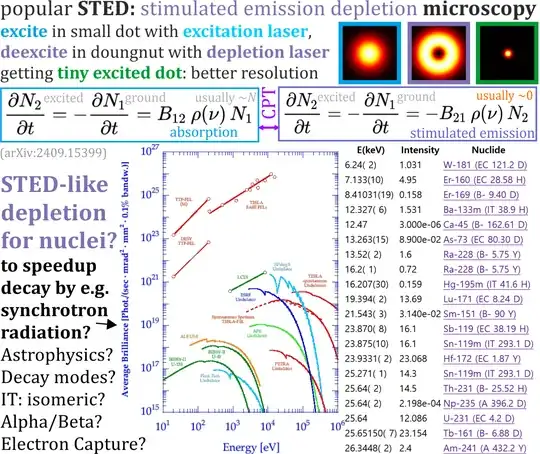In optics there is stimulated emission-absorption pair of equations, switched in perspective of CPT symmetry, allowing to also speedup deexcitation with lasers by stimulated emission/amplified spontaneous emission.
It is used for example in STED microscopes: https://en.wikipedia.org/wiki/STED_microscopy - using second laser to cause deexcitation.
Could we analogously cause deexcitation of nuclei to speedup its decay?
Induced gamma emission suggests it should be true for isomeric transition - but what about speeding up other decay modes this way, like with alpha/beta production, or through electron capture?
For example below is spectrum of available synchrotron radiation sources reaching MeVs (source), and some isotopes decaying with low energy gammas (source) - experiment would need to place isotope e.g. in synchrotron plane and test decay speed.
If true, could it have e.g. astrophysical consequences? Could have practical applications e.g. for nuclear fusion/fission, isotope as gamma optical amplifier?
Update: I have just found a few related questions: Nuclear-transition laser , Can stimulated emission happen in nuclear energy states? - however, they are focused on gamma-ray laser, and rather only isomeric transition - while the question here is of just speeding up decay, also for alpha, beta, electron capture modes.
